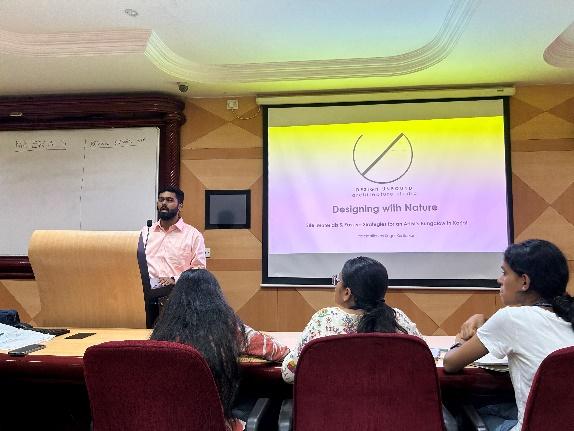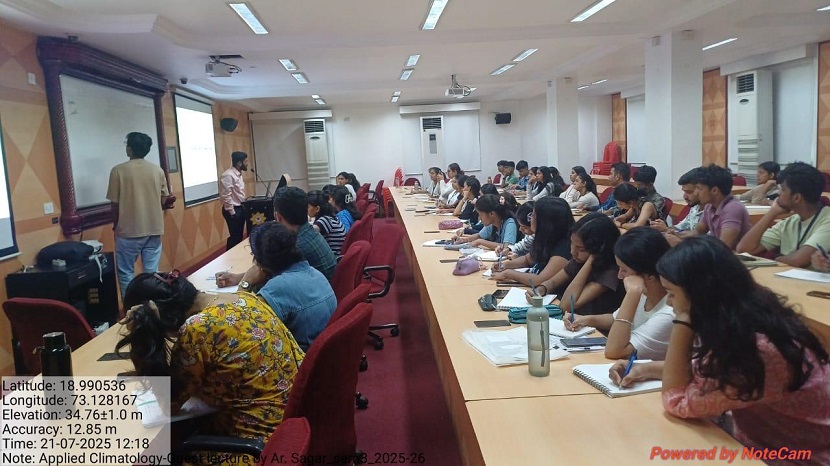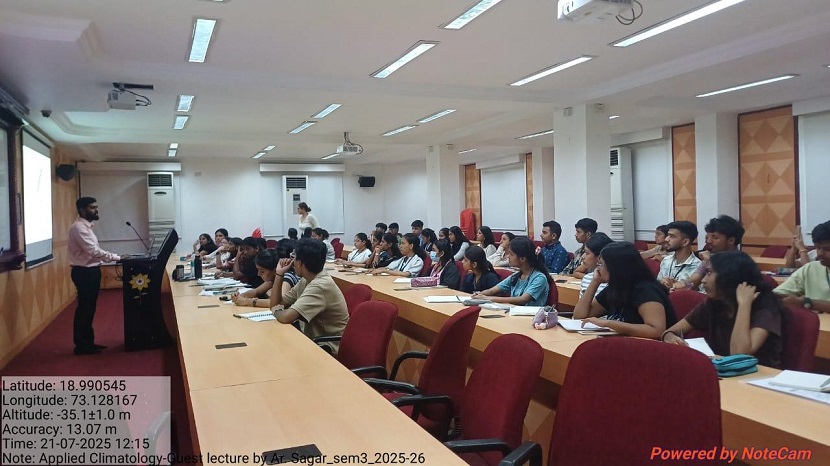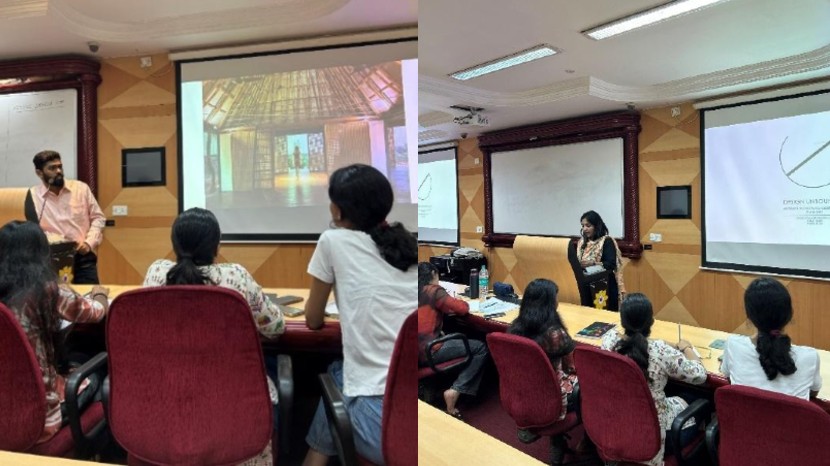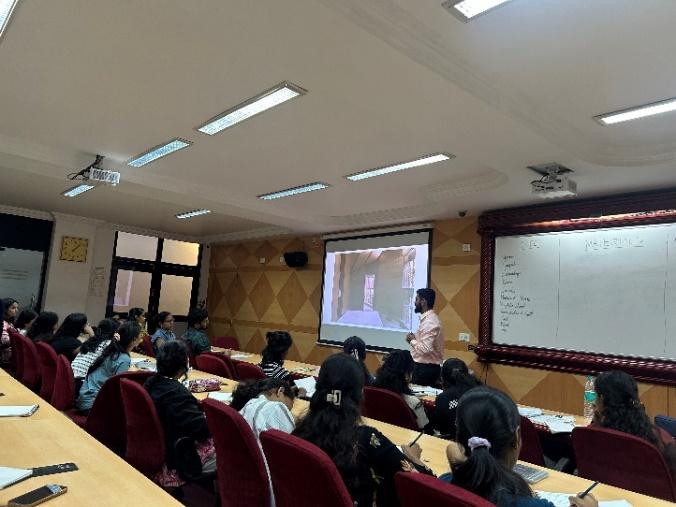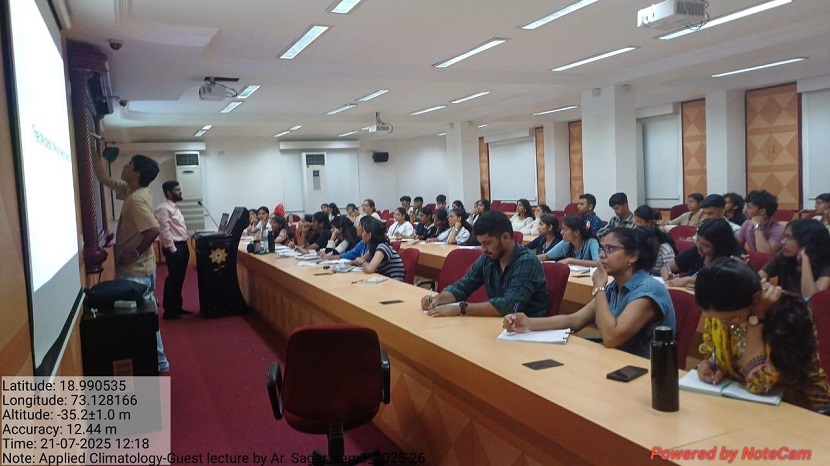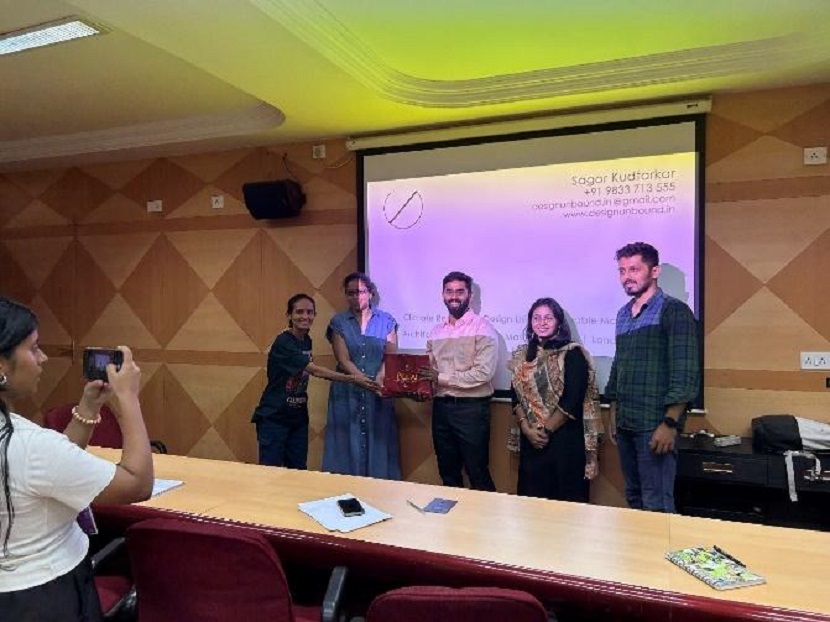| Subject | Applied Climatology |
| Session | 1 |
| Year | 2025 |
| Date | 21st July, 2025 |
| Time | 12:00 p.m. - 2:00 p.m. |
| Venue | Conclave 1, 3rd Floor |
| Faculty Co-ordinator | Prof. Ashwini Bhosale & Prof. Sarojini Lohot |
| Guest Speaker | Ar. Sagar Kudtarkar |
The guest lecture was conducted on Monday, 21st July 2025, from 12:00 PM to 2:00 PM at Conclave 1, 3rd Floor of Pillai College of Architecture (PiCA). The session was held as part of the Archilogics lecture series and was formally integrated into the Semester 3 Applied Climatology curriculum.
The event commenced with a warm welcome and formal introduction by the subject coordinators, Prof. Ashwini Bhosale and Prof. Sarojini Lohot, highlighting the relevance of the topic to both the theoretical and design studio components of the semester.
The guest speaker, Ar. Sagar Kudtarkar, delivered a two-hour engaging and visually rich presentation on “Designing with Nature: Sustainable Passive Design Strategies for Climate-Responsive Buildings.” The session included real-life case studies, design process walkthroughs, material demonstrations, and interactive Q&A segments.
In the context of increasing climate challenges and environmental degradation, understanding passive design has become crucial for the next generation of architects. This lecture bridged the gap between theory and practice by exposing students to real-world applications of climate-responsive strategies.
Key areas of significance included:
- Relevance to Curriculum: The topic directly aligned with Course Outcome 1, helping students understand climate elements and passive climatic control techniques, and Course Outcome 3, enhancing their skills in site planning, orientation, and visual documentation.
- Studio Integration: As students are concurrently working on climate-sensitive design studio projects, the lecture provided timely and applicable insights on site analysis, material choices, and passive systems that can be incorporated into their designs.
- Professional Exposure: The lecture introduced students to best practices in sustainable architecture through the lens of an experienced professional, Ar. Sagar Kudtarkar, who shared projects rooted in local materials, community engagement, and environmental responsibility.
- Holistic Learning: Beyond technical knowledge, the session encouraged students to think holistically—considering culture, context, and craft—as they design buildings that are not only functional but also responsive and responsible.
The following key points were addressed in the lecture:
- Introduction to Passive Design
- Climatic Analysis & Site Response
- Sustainable Building Materials
- Case Studies from Practice
- Hands-on Design Thinking
- Relevance to Studio Projects
The session concluded with an engaging Q&A, where students sought clarity on applying passive strategies within urban and rural contexts, understanding thermal comfort, and selecting appropriate materials.
Takeaways:
- Passive design is essential for creating energy-efficient, comfortable buildings that respond naturally to their environment.
- Site analysis is the foundation of climate-responsive design, and tools like sun-path diagrams, wind flow studies, and thermal comfort mapping are critical in early design stages.
- Material selection matters — local, natural materials like lime, earth blocks, and ferrocement are not only sustainable but also culturally and climatically appropriate.
- Design should be rooted in context — taking inspiration from vernacular practices and integrating them with modern needs can result in innovative, low-impact solutions.
- Students were encouraged to approach their studio projects thoughtfully, using climate-responsive strategies as a core part of their design process rather than an afterthought.
The event concluded with a felicitation ceremony and a formal vote of thanks, acknowledging the speaker, faculty, management, and student participants for making the session meaningful and successful.




